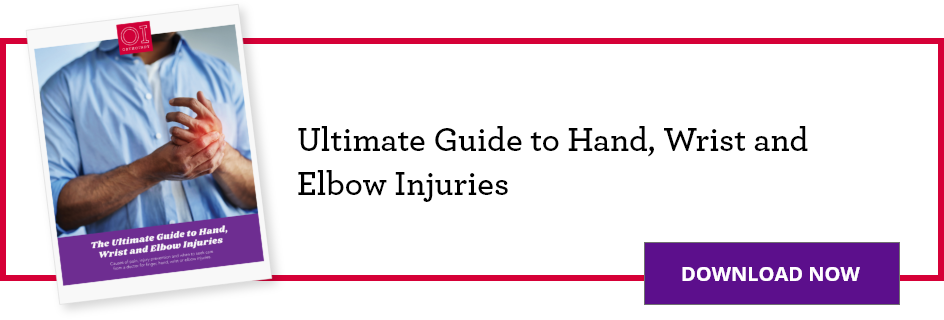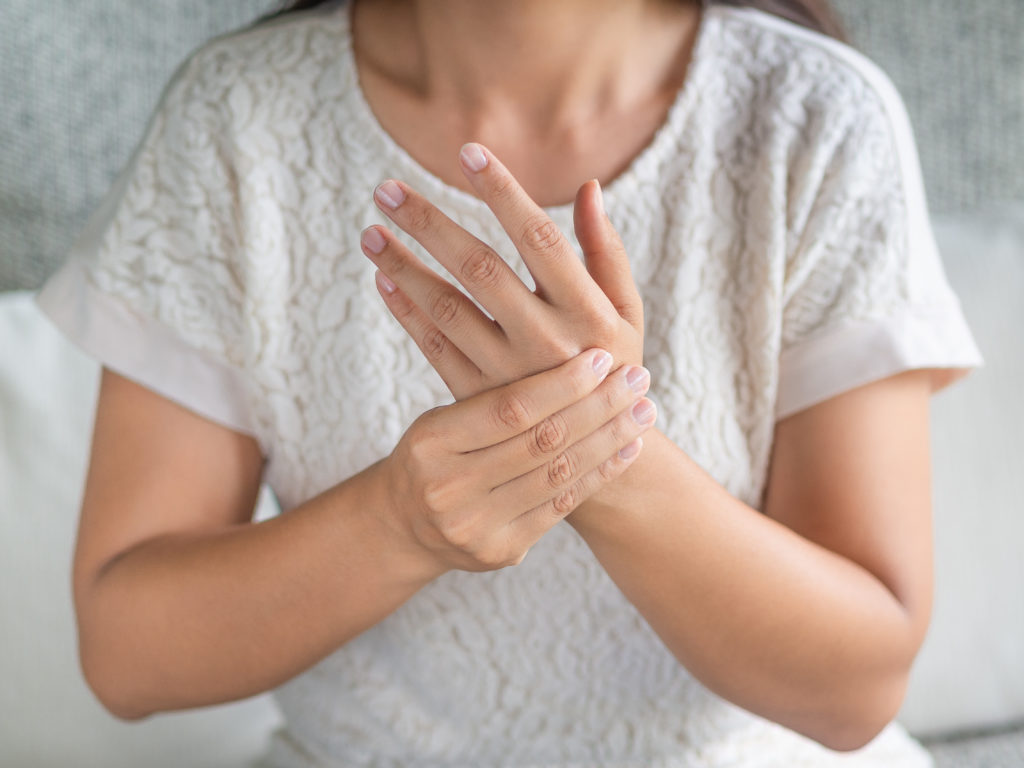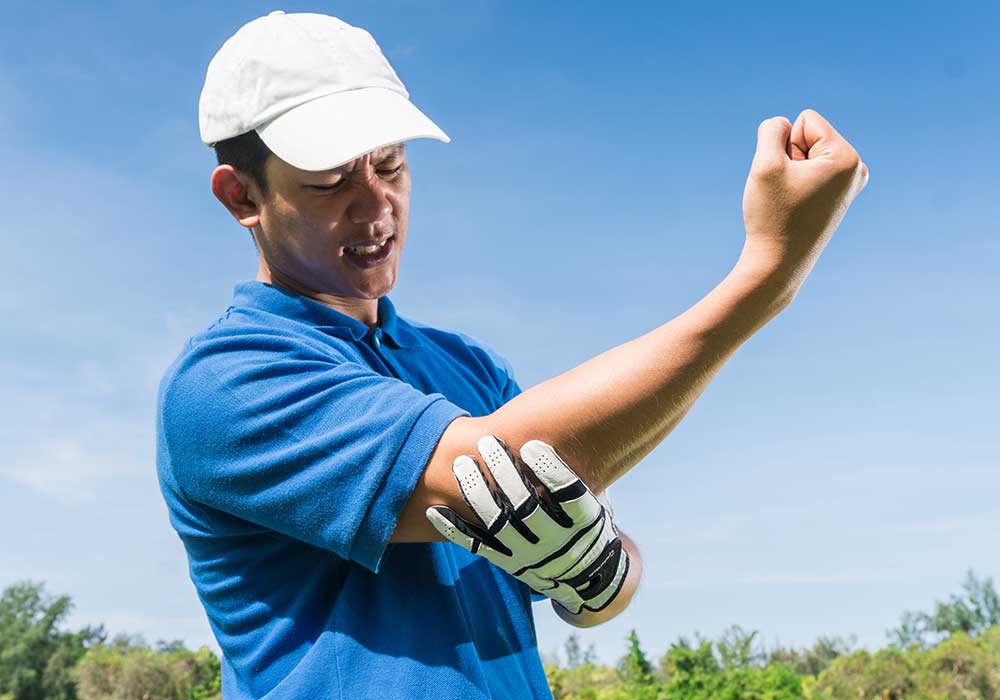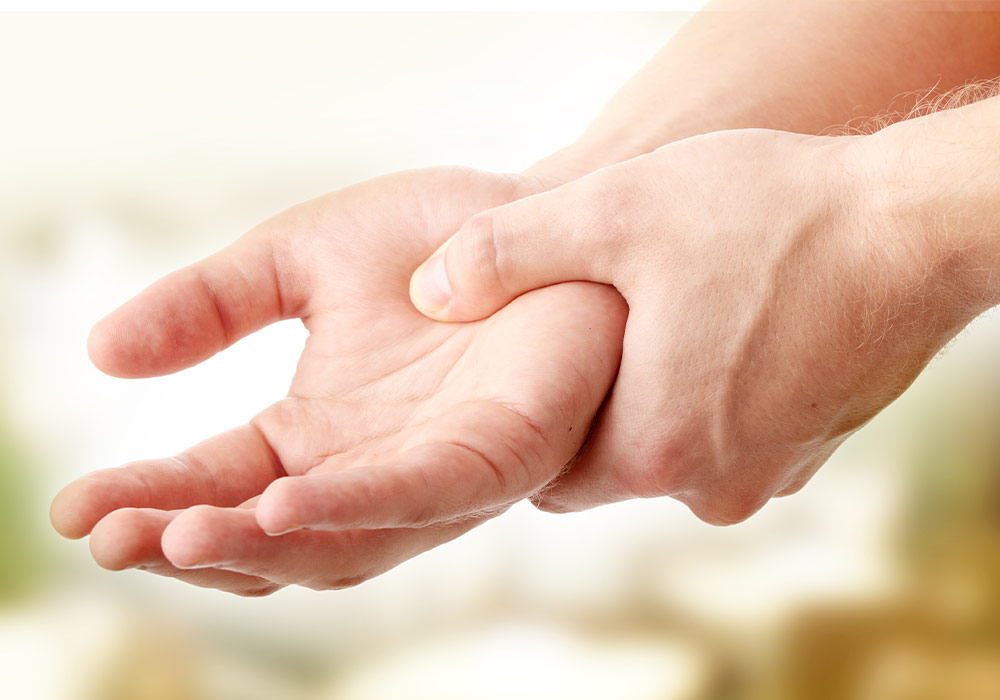THIS POST IS PART OF THE ULTIMATE GUIDE TO HAND, WRIST AND ELBOW INJURIES
Dupuytren’s contracture, or disease, is a hand deformity that usually develops over the years. It’s a condition that affects the fascia: the fibrous layer of the tissue that lies underneath the skin in the palm and fingers.
The fascia is a layer of tissue that helps to stabilize the skin on the palm side of the hand. In fact, without the fascia, your skin on your palm would be loose and moveable, similar to the skin on the back of your hand.
Overtime, patients with Dupuytren’s, will experience the fascia thickening and tightening. This can cause the fingers to be pulled inward, towards the palm. This result is known as a Dupuytren contracture.

What causes Dupuytren’s contracture?
It is unknown what causes Dupuytren’s contracture. However, it is hereditary. There are a number of factors to consider that may attribute to the development or worsening of Dupuytren’s disease. These include:
- Gender
- Ancestry
- Alcohol use
- Medications
- Age
Symptoms of Dupuytren’s disease
Dupuytren’s contracture progresses slowly over the years. A Dupuytren’s contracture is typically first detected when a lump of tissue forms under the skin in the palm. As it progresses, the skin on your palm might appear dimpled, but it usually isn’t painful.
Signs and symptoms of the condition may include:
- Nodules. You may develop one or more small lumps
- Cords. The nodules may thicken and contract, affecting the formation of dense and tough cords of tissue under the skin
- Contractures: When the tissue tightens, one or more of your fingers may be pulled which restricts them from spreading apart
Treatment for Dupuytren’s disease
Currently, there is no cure for Dupuytren’s. However, the condition is not dangerous. Since the condition progresses very slowly, it may not become irritable or hard to manage for many years. In fact, the condition may never progress past developing lumps in the palm. But if the condition does progress, your physician may recommend nonsurgical treatment, such as steroid injection or splinting, to help slow the disease down.
If the contracture interferes with hand function, your physician may recommend surgical treatment. This would help reduce the contracture and improve motion in the affected areas.
Learn more about hand, wrist and upper extremity care at OrthoIndy >
Schedule an appointment
Your well-being is important to us. Click the button below or call us to schedule an appointment with one of our orthopedic specialists. If your injury or condition is recent, you can walk right into one of our OrthoIndy Urgent Care locations for immediate care. For rehabilitation and physical therapy, no referral is needed to see one of our physical therapists.





